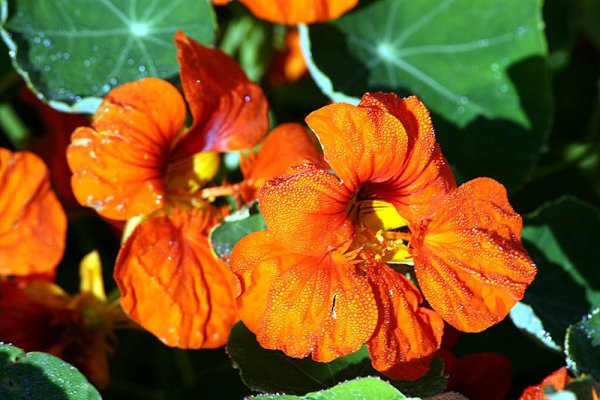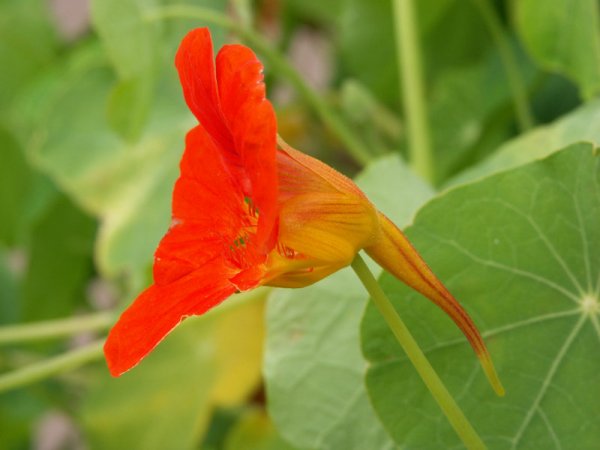[an error occurred while processing this directive] Nasturtium (Tropaeolum majus) is a flowering plant in the family Tropaeolaceae, native to South America in the Andes from Bolivia north to Colombia. It is also known as Garden Nasturtium, Indian Cress or Monks Cress. Tropaeolum majus is a herbaceous annual plant with trailing stems growing to 1 m long or more. It has large, nearly circular leaves, 3-15 cm diameter, green to glaucous green above, paler below. The leaves are peltate, with the 5-30 cm long petiole near the middle of the leaf, with several veins radiating to the smoothly rounded or slightly lobed margin. The flower is five petals with eight stamens, 2.5-6 cm in diameter, with a 2.5-3 cm long nectar spur at the rear. The color of flower is ranged from yellow to orange to red, frilled and often darker at the base of the petals. The three-segmented fruit is 2 cm broad, and each segment is with a single seed 1-1.5 cm long. Tropaeolum majus is cultivated as an ornamental plant and also as a medicinal plant. It is also grown for its striking flower, and both leaves and flower are edible. They can be used in salads, imparting a delicately peppery taste. The edible seeds can be used as a caper substitute. |


